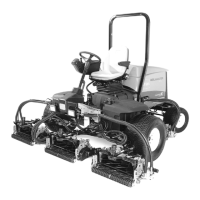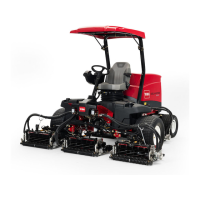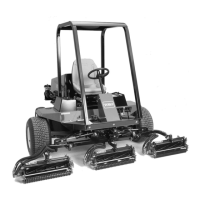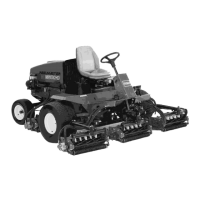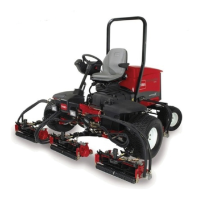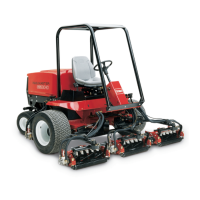TEST NO. 1: Traction Circuit Charge Pressure
1. Make sure hydraulic oil is at normal operating tem-
perature by operating the machine for approximately 10
minutes.
2. Park the machine on a level surface, engage the
p
arking brake and stop the engine.
To prevent possible personal injury from ro-
tating drive shaft, engine must be OFF before
attempting to connect gauge. If gauge has a
hose attached, be careful to route hose so it
will not contact the drive shaft.
CAUTION
3. Connect a 1000 PSI gauge onto charge pressure test
port (Fig. 17).
4. Start the engine and put throttle at full engine RPM
(approx. 3200 RPM) with no load on the system.
GAUGE READING TO BE 150 ± 30 PSI.
5. If there is no pressure, or pressure is low, check for
restriction in pump intake line. Inspect charge relief
valve and valve seat. Charge pressure can be adjusted
by changing shim thickness behind the spring. Check
for sheared charge pump key. Disassemble charge
pump and check for internal damage or worn parts.
6. Also take a gauge reading while operating the ma-
chine in forward and reverse. Start the engine and put
throttle at full engine RPM (approx. 3200 RPM). Apply
the brakes and push the traction pedal forward, then
reverse.
GAUGE READING TO BE 150 ± 30 PSI.
7. If pressure is good under no load, but drops below
specification when under traction load, the piston pump
and motor should be suspected of wear and inefficiency.
When the pump and/or motor is worn or damaged the
charge pump is not able to keep up with the internal
leakage.
1
Figure 17
1. Charge pressure test port
Testing Page 4 - 26
Rev. B
Reelmaster
®
5100-D

